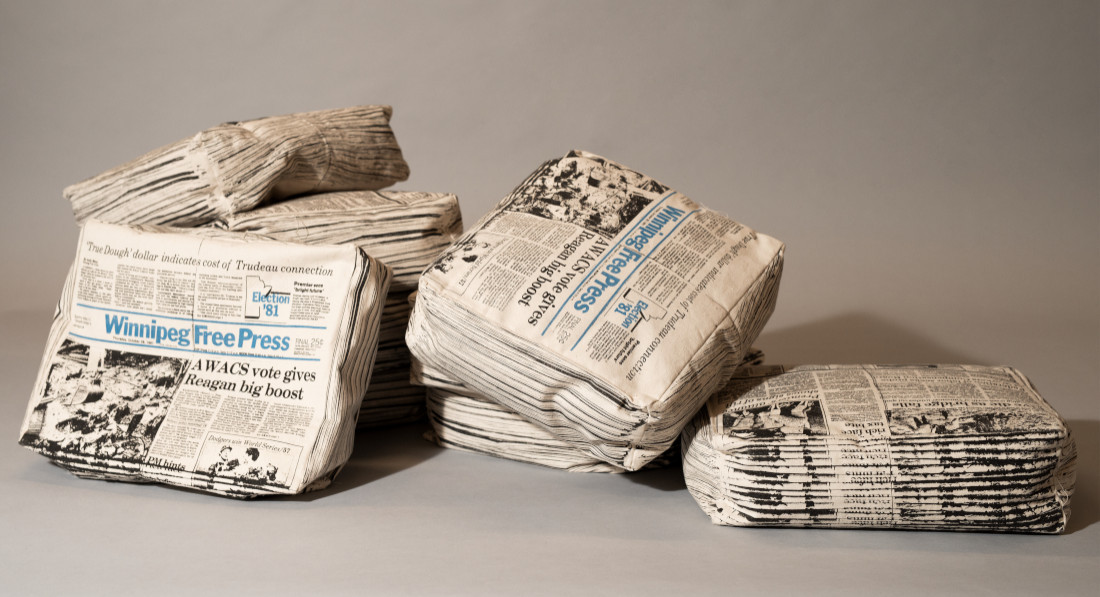Headlines
Shows until May at the Winnipeg Art Gallery
A reporter’s notebook crammed in my back pocket. A rapidly dying phone in my hand. All too much caffeine in my system. Sensationally, at least, entering the Headlines exhibit at the Winnipeg Art Gallery brought me back to the first time I walked up the escalator and into the Winnipeg Free Press newsroom. I even took a wrong turn and got lost along the way.
That feeling is intentional. The exhibition design “mimics a newsroom,” and installations devoted to front-page news, advertisers, obituaries and comics each occupy their own corner of the space.
Produced in partnership with the Winnipeg Free Press for the paper’s 150th anniversary, the show intersperses multimedia artwork with Freep memorabilia, antique reporting equipment and a station where visitors can map out their own newspaper front pages.
For me, though, Headlines: The Art of the News Cycle was even more immersive. The exhibit’s lights were dimmed in certain areas and jarringly bright in others. An ever-present buzzing sound reverberated through the rooms. I had a writing-induced hand cramp. It was all eerily similar to the Saturdays I once spent working alone in the Free Press newsroom.
Missing in both cases? Other reporters. “What is considered news, who reports it and where it will be consumed has become the steady buzz in the backdrop of each of our daily lives,” curator Riva Symko’s statement displayed at the entrance to the exhibit reads.
“Most of the time, it goes unnoticed, or remains vaguely audible, but every so often, there is something – a particularly outrageous headline, an unexpected image, an unusual delivery – that causes a sharp glitch in the buzz.”
For me, that disruption was a collection of four Myriam Dion collages, each painstakingly handcrafted and ornately cut from physical newspaper pages. “Even if you cannot fully distinguish the precise headline, the full image or the individual words on the original newsprint used in these mosaics, you cannot help but see the time and manual labour that must have been involved in their production,” an installation description reads.
This attention to detail mirrors the often-unseen journalistic process, especially for storytellers who spend hours, days, months, years crafting narratives out of raw source material – only for audiences to glance at a fragment of the final product and move along.
The show as a whole explores news outlets’ simultaneous but contradictory roles as recorders of history, storytellers and consumer-driven businesses. I felt a spark whenever I recognized an acquaintance’s byline amid the displayed articles or examined a piece of local media history.
Mostly, I left the exhibit feeling disillusioned, which may have been Symko’s intent all along, or at least a reflection of my own relationship to the news. After all, “the lines between the media, the community and the individual are becoming blurred.”
Published in Volume 77, Number 16 of The Uniter (January 26, 2023)







